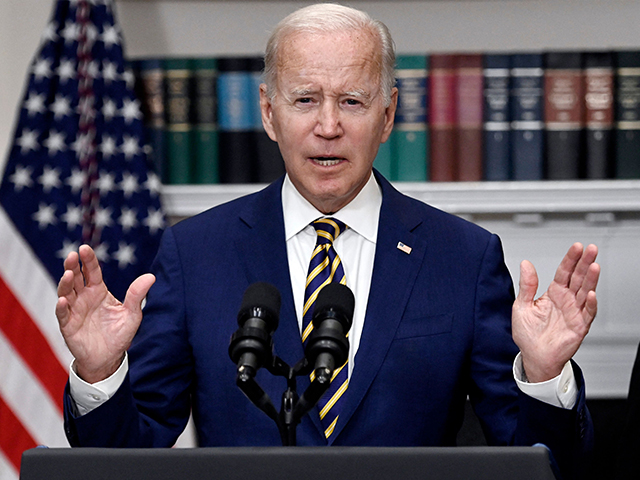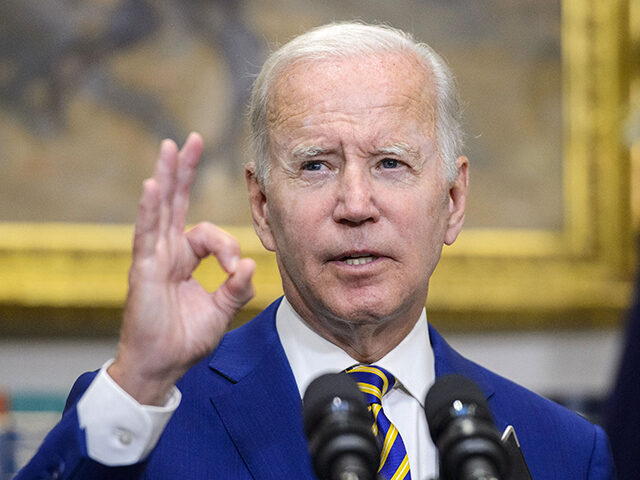It’s hard to imagine a worse time for the U.S. government to decide to launch a massive student loan forgiveness program than right now.
The plan announced by President Joe Biden on Wednesday is actually bigger than the $300 billion program many had been expected. It not only forgives up to $10,000 of student loans for anyone earning under $125,000. It also forgives another $10,000 for recipients of Pell Grants, a student aid program for low-income families. The current time-out on student loans, which was due to expire at the end of the month, gets extended to the end of the year.
The White House also indicated that it would be putting forth a regulation that would slash the share of discretionary income that borrowers in income-driven repayment plans must pay each month on undergraduate loans from 10 percent to 5 percent. This amount had already been reduced from 15 percent just eight years ago. The rule would also forgive loan balances in these income-driven plans after 10 years of payments, down from 20 under the current rules. Back before the Obama-era overhaul of student loans, it took 25 years to earn debt forgiveness.

President Joe Biden announces his student loan relief program at the White House on August 24, 2022. (OLIVIER DOULIERY/AFP via Getty Image)
This has not yet been scored by the Congressional Budget Office (CBO) or the various private outfits that estimate the costs of government programs. But we can offer a very rough estimate of the cost of all these programs: around $500 billion. Since there is no plan to pay for the debt forgiveness with tax hikes or spending cuts, the debt forgiveness will add to the budget deficit. Even when the bill was expected to be $300 billion, it was already enough to cancel out any deficit reduction from the phony Inflation Reduction Act. Now it will completely overwhelm the deficit reduction and lead to higher deficits.
This will be inflationary. Jason Furman, the Harvard economist and former adviser to the Obama White House, said, “Pouring roughly half trillion dollars of gasoline on the inflationary fire that is already burning is reckless.” By his estimate, the bill will increase inflation by 0.2 percent to 0.3 percent. That is likely an underestimate. The knowledge that a president can unilaterally reduce student loan balances will cause debtors to upwardly revise their view of their own future income disposable estimates, encouraging more spending now. It’s not just the debt that is forgiven now that will increase demand in the economy but the debt that will be expected to be forgiven in the future. This suggests that the impact could be to push inflation up by half a percentage point or even more.
The next round of forgiveness is likely not far away. This one was very clearly timed to win votes for Democrats in the midterm election. So what is there to stop President Biden from announcing a second debt jubilee in advance of the 2024 presidential election? The Committee for a Responsible Federal Budget recently estimated that the total amount of student loan debt would return to $1.6 trillion four years after $10,000 per borrower was canceled. If this is the level that counts as a crisis requiring a bailout, then we will be due for another round in 2026. If colleges respond by raising the price tag of higher education, we’ll get there even sooner.
The next time we hit $1.6 trillion the case for a bailout will be even more compelling. We’re now at 3.5 percent unemployment, and nominal wages have been rising rapidly. Household balance sheets are in better shape than they have been in a long time. As a result, those with student loan debt are actually in a better position today than they have been anytime in a decade. In a few years, it is likely that nominal wage growth will be lower and unemployment higher. Frankly, it would be irrational not to expect more rounds of debt “forgiveness” looming on the horizon.
In a low inflation environment, adding a half a point to the pace of consumer price increases might not be as objectionable. Additional demand in an economy with lots of slack and higher unemployment would be more easily accommodated. In the current environment, however, the additional consumption by beneficiaries of the student debt relief program will mean less consumption by others. The main way consumption of others gets reduced is rationing through higher prices. Furman, again, hit the nail on the head on this:
We’ve been living through an inferno of inflation, with prices rising at the fastest pace in four decades. Food prices are up the most since 1974. Rents are soaring, with the median rent payments for Bank of America customers surging 7.4 percent in July from the previous year. It is precisely in these areas of already sizzling inflation that the debt forgiveness inflation is likely to hit the hardest, putting an even bigger strain on households.
Of course, it is not really “debt forgiveness.” It is a debt transfer. The loan payments that will no longer be made by debtors will effectively be picked up by taxpayers. The money borrowed to make up for the lost revenue will need to be paid for in the form of higher taxes or lower spending in the future. The canceled loans migrate from the balance sheets of the borrowers to the collective balance sheet of the U.S. taxpayer, including many who never went to college or have already paid their loans down.
One question is how the Federal Reserve will react. Very likely, it will need to offset the inflationary pressure created by Biden’s scheme with higher interest rates. This very likely means that unemployment will wind up even higher than it otherwise would have and the looming recession will cut deeper and last longer. Part of the cost of relieving ex-college students of their debt will be throwing people out of work and damaging businesses across America.

COMMENTS
Please let us know if you're having issues with commenting.